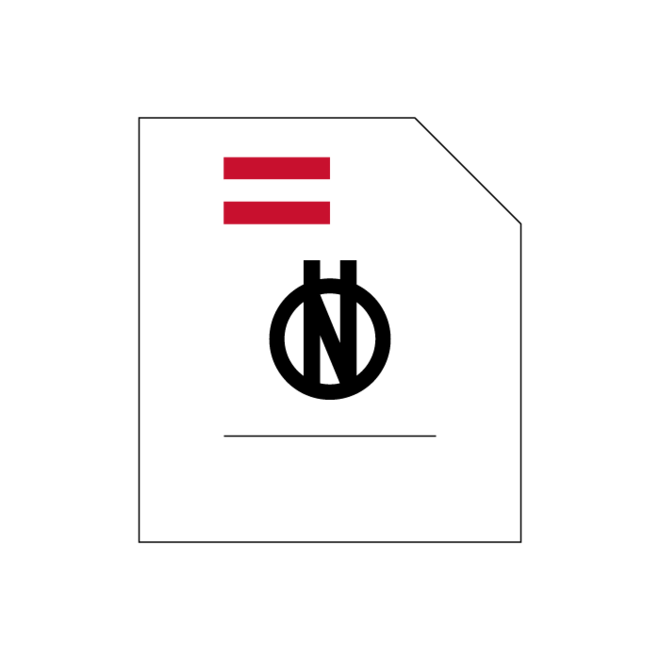Please select and order
€50.25
excl. VAT
Add to cart
Norm
ÖNORM EN ISO 23277
Issue date: 2015 06 01
Non-destructive testing of welds - Penetrant testing - Acceptance levels (ISO 23277:2015)
This International Standard specifies acceptance levels for indications from surface breaking imperfections in metallic welds detected by penetrant testing.
The acceptan...
Valid
Publisher:
Austrian Standards International
Format:
Digital | 8 Pages
Language:
German
| English
| Download GER/ENG
Optionally co-design standards:
ICS
This International Standard specifies acceptance levels for indications from surface breaking imperfections in metallic welds detected by penetrant testing.
The acceptance levels are primarily intended for use during manufacture examination, but where appropriate, they can be used for in-service inspection.
The acceptance levels in this International Standard are based on detection capabilities that can be expected when using techniques specified in ISO 3452 series and parameters recommended in Annex A.
The acceptance levels can be related to welding standards, application standards, specifications, or codes. Such a relationship is shown in ISO 17635 for ISO 5817 and ISO 10042.
Acceptance levels for grouped indications are not covered by this International Standard.
ÖNORM EN ISO 23277
2015 06 01
Non-destructive testing of welds - Penetrant testing - Acceptance levels (ISO 23277:2015)
Norm
↖
ÖNORM EN ISO 23277
2009 12 15
Non-destructive testing of welds - Penetrant testing of welds - Acceptance levels (ISO 23277:2006)
Norm
ÖNORM EN 1289
2004 07 01
Non-destructive testing of welds - Penetrant testing of welds - Acceptance levels (EN 1289:1998 + AC...
Norm
ÖNORM EN 1289/A1
2002 10 01
Non-destructive testing of welds - Penetrant testing of welds - Acceptance levels (Amendment)
Norm
ÖNORM EN 1289/AC
1999 04 01
Non-destructive examination of welds - Penetrant testing of welds - Acceptance levels (Corrigendum)
Norm
ÖNORM EN 1289
1998 05 01
Non-destructive examination of welds - Penetrant testing of welds - Acceptance levels
Norm
Norm
Issue date :
2013 05 27
Non-destructive testing — Penetrant testing — Part 1: General principles (Corrected version 2014-04)
Norm
Issue date :
2013 11 07
Non-destructive testing — Penetrant testing — Part 2: Testing of penetrant materials
Norm
Issue date :
2014 02 06
Welding — Fusion-welded joints in steel, nickel, titanium and their alloys (beam welding excluded) — Quality levels for imperfections
Norm
Issue date :
2005 11 17
Welding — Arc-welded joints in aluminium and its alloys — Quality levels for imperfections
Norm
Issue date :
2009 10 27
Non-destructive testing — Penetrant testing — Vocabulary
Draft
Issue date :
2015 06 18
Non-destructive testing of welds — General rules for metallic materials
Norm
Issue date :
2010 02 23
Non-destructive testing of welds — General rules for metallic materials
Technische Regel
Issue date :
2005 01 05
Non-destructive testing — General terms and definitions
Norm
Issue date :
2021 05 21
Non-destructive testing — Penetrant testing — Part 1: General principles
Norm
Issue date :
2021 05 21
Non-destructive testing — Penetrant testing — Part 2: Testing of penetrant materials
Norm
Issue date :
2014 02 06
Welding — Fusion-welded joints in steel, nickel, titanium and their alloys (beam welding excluded) — Quality levels for imperfections
Norm
Issue date :
2018 06 25
Welding — Arc-welded joints in aluminium and its alloys — Quality levels for imperfections
Norm
Issue date :
2009 10 27
Non-destructive testing — Penetrant testing — Vocabulary
Norm
Issue date :
2016 11 25
Non-destructive testing of welds — General rules for metallic materials
Technische Regel
Issue date :
2005 01 05
Non-destructive testing — General terms and definitions
Norm
Issue date :
2015 03 02
Non-destructive testing of welds — Penetrant testing — Acceptance levels




